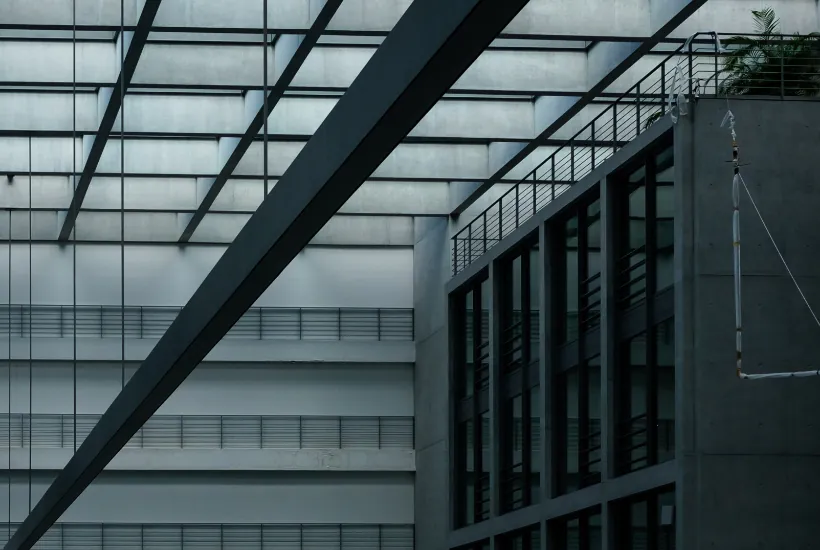How to Light, Texture, and Render Like a Pro—Plus a Chance to Buy 3ds Max 2024 at a Discount

👉 Buy and download your authentic 3ds Max 2024 license today and enjoy unbeatable pricing!
Introduction
The 3D modeling software 3ds Max has long been a go-to choice for architects, interior designers, and other visualization specialists looking to produce jaw-dropping, photorealistic images. In particular, 3ds Max 2024 offers exciting improvements that streamline your rendering workflow and help you create professional-quality visuals faster than ever before.
For anyone new to 3ds Max rendering basics, the process can seem overwhelming: balancing lighting setups, choosing or creating materials and textures, and adjusting advanced rendering settings to achieve the perfect result. However, with a structured approach, even beginners can master these core principles and elevate their architectural model to a truly polished, real-world look.
In this post, we’ll walk through a beginner’s guide to lighting, materials, and rendering settings, offering 3D design tips along the way. Best of all, if you’re eager to jump in, we’ll also introduce a path to secure a cheap 3ds Max 2024 license on our site, making it easier to start learning and creating high-quality architectural visualizations right away.
Understanding 3ds Max Rendering for Architectural Models
When it comes to architectural visualization, 3ds Max is recognized for its powerful modeling tools and robust rendering engines. Whether you’re working on a simple house design or a sprawling commercial complex, the software allows you to transform any architectural model into a photorealistic image through advanced lighting and shading capabilities.
One reason 3ds Max is so widely used is its compatibility with popular rendering engines like Arnold and V-Ray, both of which offer versatile rendering settings to suit different levels of detail. In 3ds Max 2024, Autodesk has fine-tuned these features for better performance, reducing render times without compromising quality. Before you dive into the technical details, it’s vital to understand the core workflow: you model your structure, apply realistic materials, set up proper lighting, and then configure your renderer to capture a final, lifelike image.
Preparing Your Architectural Model
A compelling visualization starts with a well-prepared architectural model. If your geometry is disorganized—objects mislabeled, random extrusions unaccounted for, or overlapping meshes—your final renders can suffer from light leaks, inaccurate shadows, or strange artifacts. To prevent these issues:
- Organize Your Geometry: In 3ds Max 2024, use layers or the Scene Explorer to keep track of different building components (walls, roofs, furniture, fixtures). Consistent naming conventions (e.g., “Wall_01,” “Window_Glass,” etc.) go a long way toward staying organized.
- Use Correct Units and Scales: Make sure your scene is set to the real-world units that match your design needs. Accurate measurement means the software can calculate realistic light falloff and shadows.
- Optimize for Performance: Large architectural projects can slow down your workflow. Consider instancing repeated elements, removing hidden geometry, or using proxies for complex assets like foliage.
By investing time in these crucial preparation steps, you set a solid foundation for truly photorealistic rendering results.
Mastering Lighting in 3ds Max
One of the most critical aspects of 3ds Max rendering basics is your approach to lighting. Even the most detailed architectural model can look flat or artificial if the lighting isn’t managed properly. Here are a few key points to keep in mind:
- Types of Lights:
- Photometric Lights: These replicate real-world lighting behavior, allowing you to adjust intensity in lumens or candelas. Great for accurate interior scenes.
- Standard Lights: Omni or directional lights can be quicker to set up, but they lack the physically accurate approach of photometric lights.
- Daylight Systems: 3ds Max offers daylight simulation, enabling you to position the sun and sky in relation to geographic coordinates. This is ideal for architects who need to study natural light in their designs.
- Natural vs. Artificial Lighting:
- Exterior Scenes: Use a daylight system or HDRI maps to produce soft, natural sunlight and nuanced sky lighting.
- Interior Scenes: Combine direct light sources like spotlights or IES profiles with global illumination (GI) to mimic real-life indoor settings.
- Optimizing for Photorealism:
- Soft Shadows: Ensure your lights cast gentle, realistic shadows.
- Bounce Light: Utilize rendering settings that allow for multiple light bounces to create a more immersive scene.
- Balancing Exposure: Use tools like the exposure control in Arnold or V-Ray to prevent blown-out highlights or murky shadows.
Mastering lighting in 3ds Max will make the difference between an average render and a show-stopping photorealistic image.
Applying Materials and Textures
Even the best lighting won’t fix unrealistic surfaces. That’s where materials and textures come in—arguably the soul of a photorealistic rendering. When you open the 3ds Max Material Editor, you’re stepping into a space where you can define how objects look, from smooth marble floors to rough, weathered brick walls.
- Material Editor Basics:
- In 3ds Max 2024, the Slate Material Editor provides a node-based approach, letting you visually connect maps and material components.
- Focus on essential channels: Diffuse (or Base Color), Reflection, Refraction, Bump or Normal, and Roughness.
- Realistic Materials:
- Reflectivity: Materials like glass, metal, and water depend heavily on reflection settings. Fine-tune Fresnel values and reflection glossiness for realism.
- Bump/Normal Maps: These add depth without increasing geometric complexity. For stone or brick surfaces, normal maps can transform a flat texture into a convincing 3D surface.
- Texture Mapping:
- UVW Mapping: Ensure textures fit properly and match the object’s scale. A mismatch in scale can break the illusion of realism.
- Tiling & Seamlessness: Use high-resolution textures or tileable images to avoid noticeable repetition.
By combining high-quality textures with the correct material settings, you’ll see your architectural model come alive with stunning detail.
Rendering Settings and Workflow
With your materials and textures set and lighting in place, it’s time to configure your rendering settings for that final photorealistic image. Many professionals choose either Arnold (the default renderer in newer versions of 3ds Max) or third-party engines like V-Ray for more specialized controls. Regardless of the renderer, here’s what to keep in mind:
- Key Parameters:
- Resolution: Determine the final image size based on your presentation needs. Higher resolutions mean longer render times.
- Global Illumination (GI): Whether using Photon Mapping, Radiosity, or Path Tracing, GI simulates light bouncing around a scene for more authentic lighting.
- Anti-Aliasing: Minimizes jagged edges. Adaptive methods optimize performance by focusing on the more detailed parts of the image.
- Render Elements:
- Break down your final image into multiple passes (e.g., diffuse, specular, z-depth, ambient occlusion). This allows for greater control in post-production.
- Performance vs. Quality:
- Test Renders: Do quick, low-resolution test renders to confirm lighting and material behaviors.
- Adaptive Sampling: Most modern render engines let you sample areas of complexity more, while simple areas require fewer calculations.
A solid rendering workflow balances the need for high-fidelity visuals against render time. In 3ds Max 2024, you’ll find speed improvements that can streamline this process, allowing you to iterate more quickly and achieve stunning photorealistic rendering results.
Post-Production and Final Touches
Once you’ve hit that “Render” button and your photorealistic image is complete, you may still want to elevate it further through post-production. Simple color correction in software like Photoshop can balance brightness, contrast, and color temperature to ensure your scene appears as lifelike as possible. You can also enhance reflections or shadows by combining render elements (such as Ambient Occlusion or Reflection passes) for extra control over specific layers.
Don’t forget contextual details. If you’re rendering an architectural model in an outdoor environment, add appropriate skies or backgrounds to complement the lighting in your scene. These final steps distinguish a good 3D visualization from a truly extraordinary one, bridging the gap between digital and real-world appeal.
Why You Need 3ds Max 2024 (and How to Get It Cheap)
As you’ve seen, 3ds Max is a powerhouse for both novices and professionals in the architectural visualization field. 3ds Max 2024 ups the ante with refined tools, improved rendering workflows, and performance enhancements that can save hours of production time—especially when dealing with complex architectural scenes.
If you’re eager to jump into these 3ds Max rendering basics, now is an excellent time to upgrade or purchase a new license. Through our site, you can access a cheap 3ds Max 2024 license that will let you take advantage of the latest features without breaking your budget. Whether you’re a student looking to sharpen your skills or a professional eyeing more efficient pipelines, our discounted offering ensures you can harness the power of 3ds Max 2024 affordably.
Conclusion
Mastering 3ds Max rendering basics begins with a clear, step-by-step approach. First, organize and prepare your architectural model with clean geometry and consistent units. Next, focus on lighting—experiment with daylight systems, photometric lights, and GI settings to capture realistic illumination. Don’t overlook materials and textures, as they’re vital to creating a true-to-life, photorealistic image. Then, refine your rendering settings—be mindful of resolution, sampling, and render elements for post-production flexibility.
By implementing these 3D design tips, you’ll be well on your way to professional-quality architectural visualization work. And if you’re ready to unleash the potential of 3ds Max 2024, be sure to check out our offer for a cheap 3ds Max 2024 license. This is your chance to elevate your designs, impress clients, and streamline your rendering workflow—at an unbeatable value.
